How to keep going when life sucks: Water the grass. And, #GetLoud.
WHEN LIFE REALLY SUCKS, GET HELP. I did. If you’re a youth in Canada (20 years old or younger), reach out to a trusted adult. Kids Help Phone also offers 24/7/365 support. If you’re an adult in Ottawa (16 or older), you can contact the Crisis Line. The Canadian Mental Health Association has information about preventing suicide. You can also Google search crisis line.
NOTE: The views presented in this article are my own views and life lessons. I’m ashamed of my story, but I’m learning to change the narrative. Writing my experience down helps me to ease my psychological pain with the hopes that sharing my story might inspire or help someone else struggling with mental health obstacles.
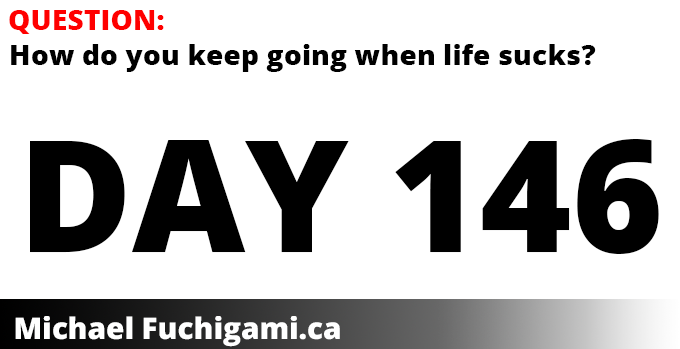
Sometimes, life sucks.
You’re depressed. Or, you’re sad. Or, you’re just off your game. I get it.
Call it what you will, but the bottom line is you’re stuck. And life sucks. The grass always seems greener on the other side.
But, actually, if you think about it, the grass is greener where you water it. It makes sense, though, doesn’t it?
Pretend the grass is a metaphor: You’re in a funk and you’ve got a bunch of brown grass slowly dying on your front lawn. What do you do about it?
(Oh, and your neighbour has that beautiful picture-perfect lawn. The green on their lawn is from actual grass, not weeds.)
We have a couple of options when we’re stuck with a brown, crappy lawn / life.
- Complain about it. After all, life sucks and it’s not your fault that the grass is dying. You have crappy grass and it was like that before you got the house. You don’t have time to water it and why should you have to, anyway. It hasn’t rained in a while which sucks because that’s killing your lawn. Plus, you have more important things to take care of.
- Be jealous of your neighbour’s lawn. It’s not fair that they have a better lawn. Their lawn gets all of the sunlight so the grass can grow. Or, their lawn gets less sunlight so the grass doesn’t burn. Or, they’re rich, so they can afford the time to water it more and pay for a lawn service to get rid of those weeds.
- Wait for someone else to water your lawn. It’s not your fault the lawn looks like this because the government should take care of your lawn. Also, your parents haven’t come over to take care of your lawn even though you’ve reminded them several times.
- Feel bad about it. You know you should spend more time and take care of your lawn because everyone else has such a beautiful lawn and that’s what houses are supposed to look like. But, for some reason, you can’t make it happen. It’s so embarrassing that your lawn sucks, just like your life. You’re just not good at taking care of lawns. You tried but you’re not good at anything.
- It’s someone else’s fault that your lawn is dying. The city snowplows ripped up the edge during the winter and now your lawn is ruined. That’s not your fault. Plus, you asked your neighbours to keep an eye on your lawn last year while you were on vacation, but they forgot, and it’s never been the same. The dogs around here keep pooping and peeing everywhere and that’s killing the grass.
- Accept it. It’s your lot in life to have a crappy front lawn. That’s just the way it is, and the way it always will be. Some people have great lawns, and some people don’t. You’re in the latter category.
- Do something about it. Own the problem, make it part of your story, rewrite your narrative and take action.
- Make peace with it. Accept the things you cannot change, have courage to change the things you can, and find wisdom to know the difference.
We all have sad lawns in our lives. (Or, if you don’t have one now, chances are, you will in the future.)
The real question is how do we deal with it.
I would like to suggest one simple strategy to move forward is to water the grass. (Metaphorically speaking, that is.)
Read on.
Table of Contents
I have a tough time getting started, sometimes.
We need to #GetLoud about mental health
Why don’t we talk openly about our mental health in the staffroom and classrooms?
- I’m scared that other people will think my pain isn’t “bad” enough
- What advice would I give a good friend going through these feelings?
- If it’s a crisis to you, then it’s a crisis.
- What do the numbers tell us in Canada
Where do our children get information about mental health and teen suicide?
- The solutions to fostering resilience and mental health are complex
- The danger of normalizing the idea that extreme bullying leads to extreme violence
- We need a balance of stories
- Don’t be ashamed of your story. It will inspire others.
- Let’s talk about it
- Ontario teachers / school boards need consistent, accurate health messages on mental health, mental illness and student suicide
RESILIENCE STRATEGIES: What does this have to do with watering the grass?
- Health is not simply the absence of disease or infirmity.
- How to get started when life feels overwhelming:
- How to keep going when we’re not successful yet:
TOO LONG; DIDN’T READ Summary: How to keep going when life sucks…
- WHEN LIFE REALLY SUCKS, GET HELP. I did.
- Decide to do something about your crappy lawn / life
- #GetLoud about Mental Health
- Ontario teachers / school boards need consistent, accurate health messages on mental health, mental illness and student suicide
- Resilience Strategies to try when your lawn / life is crappy
Do you agree or disagree with this article? Continue the conversation

I have a tough time getting started, sometimes.
Every day, I have good moments and tough moments.
I have strategies to help me get out of the dark side of my brain, but sometimes life is tough.
- I’ve had days where I hid in my bed and watched Netflix because I couldn’t make the effort to turn it off. (Damn you autoplay!)
- I’ve had mornings where I know I would feel better if I just got out of bed and started moving, but I couldn’t do it. And not being able to do it made me feel worse…
- I’ve had times when I was so upset, I just started crying in Starbucks and had to hide in the bathroom so people wouldn’t see me.
And, these days happened before, during, and after I had already activated medical, family and crisis supports to give me a hand.
So, why do I have tough moments, even though I’m already getting help? Because depression is the gift that keeps on giving!
I’ve never had someone close to me pass away. But someone explained to me that at the beginning, everyone is sympathetic for your loss. The pain is obvious and acute. Then time passes and their lives move on, but you’re stuck.
For you, that loss is forever. You’re missing a piece of the puzzle that you can never get back.
The first year is apparently the toughest. Every anniversary and milestone is another reminder that you have to get adjusted to your new normal with a part of you missing.
I’ve never had someone close to me pass away.
But, I had a severe traumatic response to a school event while teaching Grade 8 at Longfields Davidson Heights in Ottawa, and that moment changed me forever.
Time passes and the wheel of education keeps rolling at my old school:
- My teacher colleagues move on through the school year – they prepare lessons, they teach, they assess and evaluate, they write report cards.
- My middle school teaching job has been filled by another teacher. My classroom is no longer my learning workshop.
- An entire new cohort of grade 8 students is moving through the year.
And I’m stuck. Here. Trying to figure out my own path and how to adjust to my new normal.
But, I know that this is a process, and I’m not alone:
When a person receives treatment for a mental illness, it can still take time for thoughts of suicide to become manageable and stop. Good treatment is very important, but it may not immediately eliminate the risk of suicide. It’s important to stay connected with a care team, monitor for thoughts of suicide, and seek extra help if it’s needed. Community-based programs that help people manage stress or other daily challenges can also be very helpful.
CMHA: Preventing Suicide
We need to #GetLoud about Mental Health
I love that the Canadian Mental Health Association has a Mental Health Week. This year, it was May 6-12, 2019.

And, I love their hashtag campaign to invite people to #GetLoud about what mental health really is:
Mental health is a state of well-being, and we all have it. We might have a mental illness, and we might not. Either way, we can all feel well. We can all have good mental health. It is about having a sense of purpose, strong relationships, feeling connected to our communities, knowing who we are, coping with stress and enjoying life. And it’s never too early or too late to get there. But it’s not just about what you do for yourself, by yourself—everyone needs healthy and supportive places to work, live and learn.
MENTALHEALTHWEEK.ca
Love it, love it, love it: Mental health is something we all have – it’s a state of well-being. And, sometimes we’re healthy, and other times, we’re ill. But, everyone has mental health.
It’s definitely important to have these days, weeks, or months to raise collective awareness and put a spotlight on things.
Schools and media might take the time to look at the issues and raise social consciousness. For example, many Canadian schools talk about Remembrance Day or Black History Month.
But, I know from thinking about diversity and trying to teach equity, that these days, weeks, and months are just the start of the conversation.
- Sometimes, there’s so much noise, that it’s hard to get noticed. For example, May 29, 2019 is the Internation Day of UN Peacekeepers, Senior Health & Fitness Day, and World Digestive Health Day. It’s also part of Military Appreciation Month, Lyme Disease Awareness Month, Asian Pacific Heritage Month, and apparently Hamburger Month.
- Sometimes, celebrating a day simplifies the issue into a tokenism checklist: heroes and holidays! It lets us say things like, oh I already covered that issue… and this excuses us from having to think about the issue in a deeper way.
The real conversation and the real equity work happens when we embed these conversations into our day-to-day.
Talking about mental health in the classroom, with our loved ones, and with society in general is tricky, if not downright scary!
So, why don’t we talk openly about our Mental Health in the staffroom and classrooms?
I have a theory. It’s because we’re embarrassed and ashamed.
- So much stigma.
- So much personal embarrassment.
- So much judgment from other people
Who needs that? It’s easier to talk about a broken arm or a cancer diagnosis than it is to talk about depression or a disorder diagnosis.
(Plus, if it’s at work, talking about mental health struggles might be a career limiting move. Yes, yes, we all have lovely mental health platitudes on our bulletin boards and wonderful mental health policies in play. We believe in Respect, Inclusion, Safety, and Empowerment… but sometimes, policy and reality are two different things. We talk the talk, but do we also walk the walk?)
I’m much more comfortable talking with random people on the internet than to tell my neighbours face-to-face that I quit my teaching job because of mental health trauma at work.
I can’t prove to the court of public opinion that I’m hurt. There’s no cast. There’s no hair loss from chemotherapy, no visible signs of injury. But, my brain is hurt.
I’m embarrassed that I failed: myself and my students. I’m embarrassed that I wasn’t strong enough.
In fact, I’m embarrassed to tell other people who have mental health struggles about my mental health struggles. Oh, sure, I can be sympathetic and understanding with what they’re going through, but I don’t want to talk about my pain.
Why?
Because I’m scared that other people will think my pain isn’t “bad” enough. My pain is not worthy.
Inevitably what starts happening in my head is the cycle of self-doubt:
- My pain isn’t that bad…
- I’m the only one, so I shouldn’t feel this way…
- Other people have it much worse, so I should have been able to suck it up.
After all, the Workplace Safety and Insurance Board (WSIB) denied my claim and said that the event that happened while I was teaching at Longfields Davidson Heights did not meet their threshold for a mental health claim.
After all, my union said there was nothing I could grieve.
After all, I was reminded of the facts that no one else has expressed concern about this issue – I’m the only one. Why am I still going on about this issue?
I started thinking that my pain wasn’t worthy of attention. There are people in the world who have gone through some horrific experiences:
- Soldiers, civilians, and refugees who have been in conflict zones. I can’t imagine the horrors they’ve seen.
- Children, teenagers, or adults who are abused. I can’t imagine the horrors they’re going through.
- First-responders who deal with some of society’s most complex and critical situations. I can’t imagine how they keep going.
I’m not a firefighter, police officer or paramedic. I don’t work in Corrections, Dispatch, or Border Services.
I’m just a teacher.
So, then I think my pain isn’t worthy. And I’m embarrassed to even bring it up. How can I possibly compare?
What advice would I give a good friend who was going through these feelings of pain?
One strategy to challenge your thoughts of inadequacy is to ask yourself, if your best friend was going through this situation, what would you tell them?
Sometimes, when we’re harsh on ourselves, it clouds our judgement. So, here’s what I would tell “me”, if “me” was a good friend:
First, I would tell them their pain was real, and they were worthy.
Here are tips for talking with a loved one:
Source: Canadian Mental Health Association
- Find a private place and let your loved one take as much time as they need.
- Take your loved one seriously and listen without judgement—their feelings are very real.
- Keep your word—don’t make promise you can’t keep or don’t intend to keep.
- Tell your loved one that they are important and that you care about them.
Second, I would tell them that you can’t compare yourself to others.
If we take it back to diversity education, who is to say that one person’s experience of racism is “worse” than another person’s experience of sexism?
Discrimination is discrimination.
My good friend would probably say, yeah, but if you get hit by a car, there’s a difference between getting a scratch, a sprain, a fracture, or being paralyzed.
And, I would agree.
But, then my third point would be to tell my good friend that when we talk about mental health, we have to consider context.
Just because someone else has it worse doesn’t diminish or invalidate your experience:
- In Ontario, a single adult making $22,000 a year is considered low-income. This works out to be about $60 per day (or $44 USD per day.)
- In comparison, extreme poverty in the world is defined as a daily income of less than $2 USD per day. (Actually, technically $1.9 USD per day, but $2 is easier math.)
It would be absurd to say that a Canadian making $44 USD per day doesn’t feel the pain of poverty just because there are people worse off in Cambodia living on less than $2 USD per day.
Cost of living in Canada is clearly different from Cambodia. Poverty depends on context, and so does mental health.
Psst, cool teaching moment: Want to see what extreme poverty looks like? Check out Dollar Street by Gapminder.
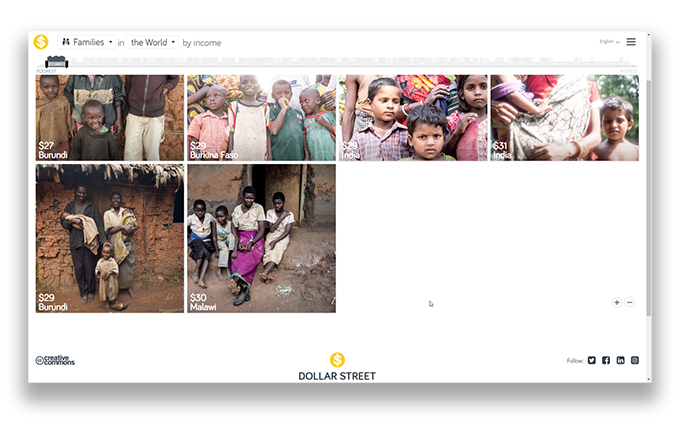
My good friend would kind of agree with that point, but then he would be quick to point out that he still feels embarrassed because he’s comparing his mental health trauma to the PTSD of a police officer arriving at the scene of domestic violence.
And, we’re both in Canada.
Then, I would talk about leveling up in video games to show that their mental health struggles were valid.
I used to play Clash of Clans. A lot.
Like many video games, the more you play, the more treasure and experience points you get, which then helps you unlock more powerful characters, which lets you take on harder bases and bigger challenges.
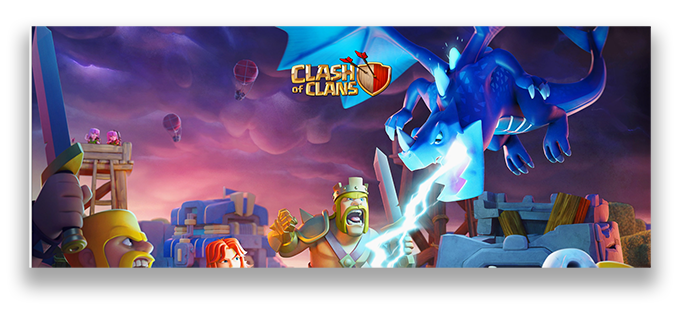
What do video games have to do with mental health?
Well, it’s a metaphor. I’m comparing the challenges of facing obstacles in a video game with the challenges of facing mental health obstacles in real life.
At the beginning of a video game, your characters are pretty weak. In Clash of Clans, you might only have Level 1 Barbarians and Archers, and you’re only able to take on weak bases. But those weak Town Hall 4 bases still present a challenge for you.
Later on, you might have unlocked Level 8 Barbarians and Archers and along with your Level 60 Barbarian King and Level 60 Archer Queen, you’re ready to take on max Town Hall 12 bases!
- A Town Hall 4 base might be a challenge for a new player. You might lose repeatedly against this level of base, and that’s okay because that’s where you’re at. A TH 4 base might be a hard challenge at that stage of the game.
- If you’re a high level player with max troops, then a hard challenge for you might be going up against fully maxed TH 12 bases.
Bottom line is that in a well-designed video game, there are appropriate challenges and obstacles to overcome at all stages of the game. And the difficulty of the obstacle is relative to your level in the game.
In other words, it’s the difference between your level in the video game and the boss’ level that matters, not the ABSOLUTE level of the boss.
Taking it back to mental health challenges:
- I might be at Level 1 and have a really tough time with a Level 4 obstacle.
- A firefighter might be at Level 8 and find a Level 11 obstacle too much.
Either way, the obstacles are three levels above what we’re ready to handle.
Ultimately, what it comes down to is this:
If it’s a crisis to you, then it’s a crisis.
I didn’t coin that phrase. I’m paraphrasing the Crisis Line’s slogan:
If it’s a CRISIS to you, it’s a CRISIS to us. Just call.

When I find myself in a really dark place, I find that idea comforting. That someone else believes that what I’m going through is an actual crisis.
Chances are you know someone affected by mental health challenges.
- It might be a a parent, a child, a friend, a colleague, a loved one…
- It might be yourself: your present self, your past self, or possibly your future self.
The numbers tell us that in Canada:
Mental illness indirectly affects all Canadians at some time through a family member, friend or colleague.
In any given year, 1 in 5 people in Canada will personally experience a mental health problem or illness.
Mental illness affects people of all ages, education, income levels, and cultures.
Canadian Mental Health Association
After leaving the classroom, cancelling my Ontario College of Teachers membership and becoming a general member of the public, I’ve met some lovely people. Some of their children are struggling with mental health obstacles.
NOTE: All of these examples come from people that I met after January 1, 2019 – the day after I officially resigned from my Grade 8 teaching job in the Ottawa Carleton District School Board (OCDSB). In other words, none of these examples come from my life as a teacher:
- I have friends whose children have a parent who committed suicide, and the kids are struggling themselves.
- I have friends whose children are excluded at school and these kids cope by eating. Or not eating.
- I have friends whose children have attempted suicide. Multiple times.
- I have friends who have attempted suicide.
Clearly, we need to #GetLoud about mental health and to advocate for our students’ and children’s mental health.
Where do our children get information about mental health and teen suicide?
On November 13, 2010, Daron Richardson died by suicide. She was 14 years old.
Parents Luke and Stephanie Richardson bravely turned their story of tragedy into a public call-to-action to support young people who struggle with mental illness.
I live in a world where there are courageous people talking about their private stories to hopefully inspire others to be strong.
I also live in a world where popular culture normalizes misinformation about teen suicide.
To put this in perspective:
- The most watched YouTube video on the DIFD channel is Daron Richardson’s Story on Sports Net with over 22,000 views
- The TSN Original: Purple Hearts YouTube video about Daron Richardson’s story has over 51,000 views.
- The 13 REASONS WHY Official Trailer (2017) Netflix TV Show HD YouTube video has over 659,000 views.
That’s right. The trailer for the Netflix show, 13 Reasons Why, has been viewed approximately 10 times more often than Daron Richardson’s story on YouTube.
Yes, I know I’m simplifying the math – Netflix’s reach is global and the reach of DIFD is much smaller.
Still, an argument can be made that media – whether we’re talking about pop culture, streaming internet, social media, or traditional news outlets – provide us with exaggerated, sensational, skewed sources of information.
In 2017, when 13 Reasons Why came out, I intentionally chose not to watch it. In fact, a lot of educational and health professionals cautioned parents about the dangers of the show.
Tony Pontes, Director of Education at Peel District School Board in Ontario, communicated with parents about risk factors of 13 Reasons Why. The series:
…sensationalizes the act of suicide, which may lead to vulnerable students misinterpreting its message… Although this series has been promoted by the creators as a tool to help students recognize their impact on others to prevent suicide, it does not address mental illness or present viable alternatives to suicide…”
Tony pontes, director of education, peel district school board
Chief Psychiatrist of the Hincks-Dellcrest Centre in Toronto said 13 Reasons Why “has the ability to be dangerous to youth because it lacks a message of hope.” Although the show has “courage” for depicting heavy topics like bullying… and suicide, it…
…ultimately sends the wrong message… The cat is out of the bag. [13 Reasons Why] is out there so kids are going to watch it… There’s no harm in talking about suicide but it’s got to be balanced, reasonable and include a message of hope and optimism, which is that most mental illness can be treated and suicide does not have to be the response to bullying.
Dr Marshall Korenblum, Chief Psychiatrist – Hincks-Dellcrest Centre for Children and Families in Toronto. Source: CTV News
Suicide is a difficult topic to bring up.
But, as parents, teachers, caregivers, and trusted adults in our children’s lives, we need to #GetLoud about understanding suicide and finding help for our loved ones.
While most young people are able to cope, a few may see suicide as the only way out.
SOURCE: Canadian Mental Health Association
The solutions to fostering resilience and mental health are complex with multiple stakeholders and viewpoints.
This is a complex issue with strong opinions based on our personal experiences.
- We all have an opinion about parenting because we were all children ourselves.
- We all have an opinion about the education system because we grew up and received some form of learning.
- We all have a state of mental health, and so accordingly, we all have an opinion about how to be healthy, and how to help our kids be healthy.
There are a lot of opinions and viewpoints, and when we talk about things like bullying, mental health, mental illness, teen suicide, or school shootings, we don’t all agree about what should be done.
As such, championing the protection of the mental health of vulnerable students requires courageous conversations, public awareness, political advocacy, and media weight.
We need teachers, parents / guardians, mental health professionals, school boards, the College of Teachers, the government, the union, the public, and other partners to develop policies and cultures that ensure accurate information around suicide and school shootings can be provided to students.
At the very least, we need to know that misinformation is not distributed by a trusted source like a teacher or school.
This is a delicate conversation, however the cat is out of the bag. We have a generation of teenagers being raised by Netflix and 13 Reasons Why.
The danger of normalizing the plot line that extreme bullying leads to extreme violence
13 Reasons Why and other stories, plays, movies and narratives like it normalize a lack of hope. They make that story seem like the only story. A single story.
Novelist Chimamanda Ngozi Adichie talks about the Danger of a Single Story in her TED talk:
The single story creates stereotypes, and the problem with stereotypes is not that they are untrue, but that they are incomplete. They make one story become the only story.
Chimamanda Ngozi Adichie
If the trailer for 13 Reasons Why gets 10 times more airplay than a video about a real 14 year old girl who died by suicide (and the positive mental health movement that grew out of tragedy), then we need to give our students and children many more stories about hope and survival.
We need a balance of stories.
Through his novels, Nigerian author Chinua Achebe gave a voice to the realities of Nigerians and “many generations of African people” that contrasted the existing Western body of literature that “presented Africa in a very bad light and Africans in very lurid terms.”
Achebe said that to break a monologue perspective, we need “a balance of stories where every people will be able to contribute to a definition of themselves.”
If we take it back to mental health, then we all have an obligation to #GetLoud and share our stories.
Don’t be ashamed of your story. It will inspire others.
Quote source: Healthplace.com
Extreme bullying does not have to end in extreme violence. This does not have to be the only story our students and children learn.
- Let’s get some more stories about grit, tenacity, and perseverance.
- Let’s create our own experiences about resilience.
- Let’s give our students and children the tools to construct their own narrative, pick themselves off the ground, and gain confidence in their ability to persevere in the face of adversity.

#GetLoud about mental health.
Let’s talk about it.
One consequence of putting a spotlight on this issue is that some teachers will shy away from important conversations with students about mental health, student suicide, and school shootings for fear of professional repercussions.
However, I would argue that this is an opportunity for school boards to develop clear mental health policies and appropriate messaging around mental health, mental illness, student suicide, and school shooting that support front line educators to deliver courageous conversations.
Teachers and administrators need to be cognizant of the difference between intent and impact of their lessons. They need to be sensitive to vulnerable students who have mental health challenges that are diagnosed, or undiagnosed.
As a province and as a society, we need to have a larger conversation about the role of teachers and schools in providing accurate information around student mental health, student suicide, and school shootings.
- We already know that “beautiful, outgoing and athletic 14-year-olds” can die by suicide without any warning signs to family, friends or teachers.
- We already know that education and mental health organizations are speaking out against the dangers of 13 Reasons Why
What we don’t realize is that there is inconsistency in what teachers, principals and school boards believe is appropriate messaging regarding student suicide and school shootings.
In Ontario, Sabrina Shannon’s tragedy helped pass a new law that requires anaphylaxis safety plans which include “strategies to reduce exposure to allergens, procedures to communicate to parents, students and employees about life-threatening allergies, and regular training on dealing with life-threatening allergies for teachers and staff.”
Rowan Stringer’s tragedy helped pass concussion safety legislation “designed to protect amateur athletes and educate coaches about the dangers of head injuries”
Ontario teachers and school boards need to deliver consistent, accurate health messages on the topics of mental health, mental illness and student suicide
Ontario needs legislation in a similar vein to protect student mental health.
Conversations that present an informed and balanced opinion on difficult topics like suicide and school shootings should be more clearly defined and enforced.
- Principals, superintendents, and school boards should be given policies on when to inform parents / guardians that their children have been exposed to ideas of suicidal ideation.
- Teachers should receive sensitivity training on mental health issues and appropriate messaging around bullying, suicide, school shootings, and mental health supports.
- These policies and training should be developed from multiple voices and stakeholders.
The Ontario public needs to be able to trust that their children will not receive sensational misinformation around suicide and school shootings at school.
Quite the contrary, the Ontario public trusts schools to be a source of accurate mental health information.
In Nov 2018, the Ontario College of Teachers put out an advisory supporting students’ mental health because both teachers and parents/guardians identified the need for consistency in the advice teachers present about this important topic:
In focus groups last summer, teachers and parents identified the need for consistent advice on the topic. College’s Council approved the advisory to help Ontario teachers support students.
Source: Ontario College of teachers
No one is asking teachers to diagnose mental illness.
Teachers are front line staff who are in a position to observe our children closely. We’re asking teachers to know “what to look for.”
Teachers don’t diagnose mental illness… But they can support students at risk by knowing what to look for, who to report to and where to find resources.
Nicole van Woudenberg, Chair of Council, Ontario College of Teachers
Teachers and schools have the power to choose which stories get told in their classrooms and assemblies. Similar to anaphylaxis training, I think all teachers need to be systematically trained and reminded annually at staff meetings / PD days that:
- Intent doesn’t matter as much as impact.
- Risk factors of suicide are many, including experiencing significant personal loss or crisis, minority sexual orientation, and exposure to suicide in the media or through personal relations.
- Warning sides of suicide include ideation / thinking about suicide, anxiety / feeling unable to cope, and hopeless feelings like things will never get better.
Suicide is an important, but difficult topic for parents / guardians / teachers to have with the youth in their lives.
Resilience Strategies: What does this have to do with watering the grass?
I know, right? This article started by talking about grass and lawns, and somehow we got to mental health and teen suicide.
Stay with me here: Life is struggle. Eventually we’re going to be faced with brown, lifeless lawns at some point.
I think the challenge is to own the struggle and do something about it. The real question is what strategies do we have to deal with these metaphorical crappy lawns?
Health is not simply the absence of disease or infirmity.
Health is a state of complete physical, mental and social well-being and not merely the absence of disease or infirmity.
World Health Organization
I really like the World Health Organization’s definition of Health because the metaphor of watering the grass as a strategy for resilience works whether you are healthy or ill.
How to get started when life feels overwhelming – Part 1
Sometimes, I have a tough time doing anything. We all have moments like that.
So, my strategy is to do something. Anything. Just get started. Even if it’s only for five or ten minutes.
Starting a task can be easier if you only have to do it for a little bit. Set a 10, 15 or 25 minute timer to get started, and then reward yourself with a little break. You can put up with anything for 10 minutes… even work!
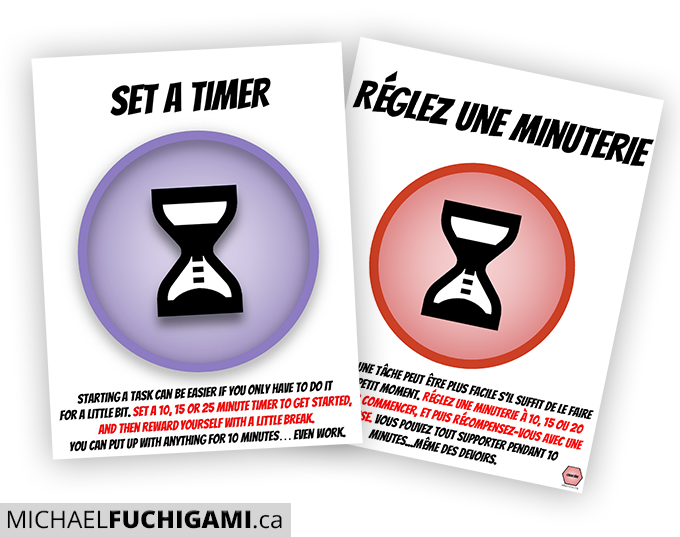
This is going to sound weird, but the goal here is not necessarily to do anything well, but just to do something.
When life sucks, it’s hard to do anything. The inertia is too big. So the point here is just to do something. Anything. Just water the lawn for a little bit.
Mark Manson talks about this “do something” principle in his book:
If you lack the motivation to make an important change in your life, do something – anything, really – and then harness the reaction to that action as a way to begin motivating yourself.
Mark Manson, The subtle art of not giving a F*ck, pg 161
Remember. When life feels overwhelming, just do something / anything for a few minutes to start the ball rolling.
How to get started when life feels overwhelming – Part 2
When I’m able to get out of bed and do something for a few minutes, my next strategy is to try to trick myself into doing more.
My goal isn’t to be “productive” or “to finish something” – my goal is just to “get started.”
But, once I’ve gotten started, I try to keep the momentum going by setting a timer.
I plant virtual trees in a forest app to try to stay focused as I work.
Basically you set a timer and plant a bush or tree. If you don’t touch your phone during that time, the seed grows into a tree and you get virtual coins (to buy different types of trees.)
When life feels overwhelming, I plant a virtual tree on the app for 25 minutes. At the end of 25 minutes, I might keep on working cause I’m gotten into a groove. Or, I might take a break.
The app shows me how many minutes I focused – by day, week, or month, so I try to make it into a game to see how much I can do.
The key here is to find something you can count or measure to see how much you’re improving. Sometimes, you’re winning, even though it doesn’t feel like it.
At this point of the struggle, I don’t care if my numbers aren’t getting better. I’m just happy if I can focus on something else to distract my mind from whatever is bothering me.
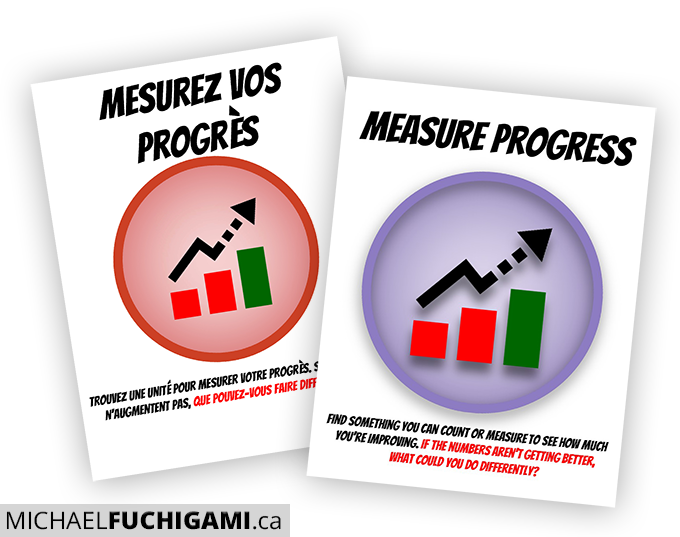
How to keep going when we’re not successful, yet: Part 1
In the classroom, one of the most common complaints I would hear from students was, “I tried, but it didn’t work.” This was quickly followed up by, “I give up!”
The reality is that life is hard, sometimes.
Childhood and school is a great place for us to fail, and to try to develop that perseverance muscle to keep going, even though things aren’t working yet.
(I’m not talking about catastrophic failure, here. Of course there are times when our kids need adult support to navigate through struggles.)
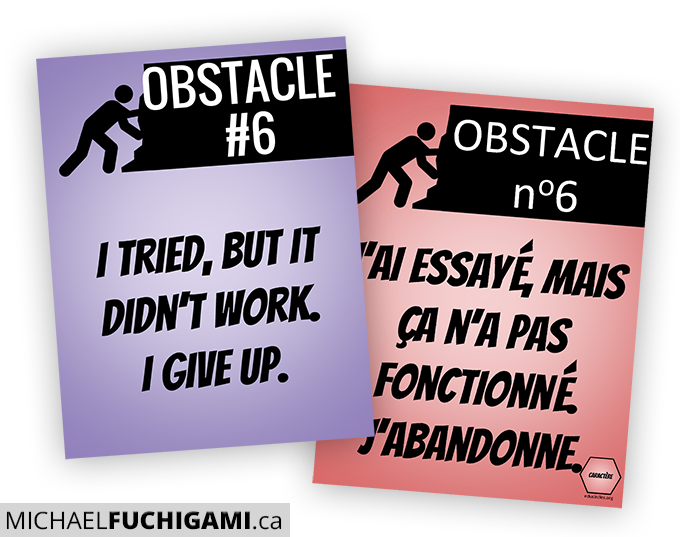
If we’re not getting the results we want – if the grass on our front lawn is brown and dying, then the reality is we need to water the lawn.
In real life, when we don’t want to do something because we suck at it – well, we tend to avoid that chore.
- I hate track-and-field day at school because I suck at running. So I don’t do running activities.
- I hate math because I don’t get it. So, I drag my heels when it’s time to do math homework and don’t really try.
- I hate history class – I don’t see the point and I tried, but it didn’t work and I still didn’t get good marks… So, I show up to class late, or skip entirely and miss parts of the lesson.
Sometimes, if we make things a habit – if we do things that we’re not good at often enough, we eventually get a little better at it…
We are what we do repeatedly. The more we do something, the easier it becomes. Figure out what you want to do, and find a strategy to help you do it over and over again until it becomes second nature.
- If you suck at running, join the running club at school so that you’re moving at lunch time. You don’t have to be good; you just have to show up.
- If you suck at math and don’t do your homework, then set up a regular homework time – maybe a routine where you eat a snack once you get home and do math for 20 minutes, even on the days you don’t have math homework.
- If you hate history class, then see if you can show up on time and prepared, every day. First one there with your paper and pencil out, ready to start.
Need some more grown-up examples?
- If I hate the way I feel, sometimes physical activity helps. Personally, I try to go to my gym class at the same time every day or I’m likely to crawl back into bed.
- If we’re constantly overwhelmed and busy with work and family obligations, can you set aside 10 minutes of “me time” every night before bed? Or wake up 15 minutes early before the day starts to just have time for yourself – doing the things you want to do, and not the things you feel you have to do?
- If you find yourself getting angry and overwhelmed, at the first sign of tension, can you slow yourself down – your breathing, your voice, your movement… can you make this a habit?
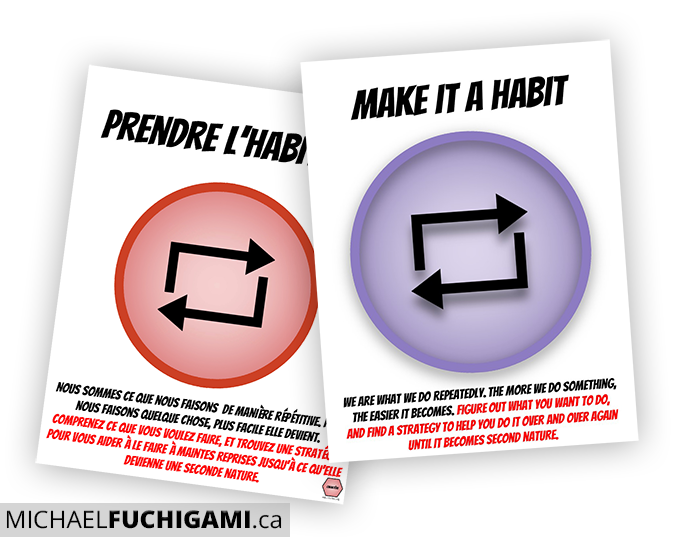
How to keep going when we’re not successful, yet: Part 2
I have a new career as an internet entrepreneur. Some months are more successful than others.
In order for me to become more successful, I clearly need to pay attention to the results of my strategies and optimize what I’m doing.
One strategy when we’re “watering our grass” is to optimize: Make the best or most effective use of a situation, opportunity, or resource. The goal is to improve efficiency.
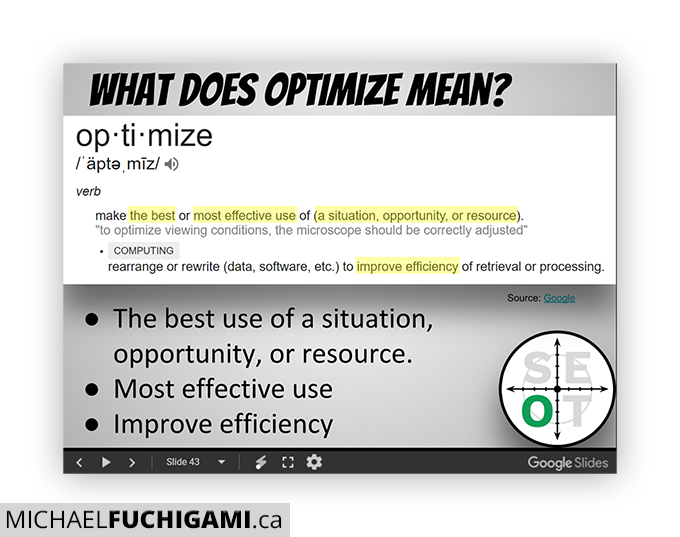
If we think about whatever is sucky in life… sometimes, we work really hard at something, but we don’t get the results we want.
The reality is that sometimes, effort alone doesn’t cut it. We need to learn how to work smarter, and not harder.
Working smarter means…
Trying different strategies,
Putting in the effort,
Optimizing what you do, and
Tinkering with little experiments
How to work smarter… Source: SEOT.ca
What does this mean for our metaphorical lawn? Sometimes watering alone may not get the results we want.
We can put in lots of effort and water it daily, but maybe we’ll just end up helping our dandelions grow!
Sometimes, we need to change the plan.
- Insanity is doing the same thing over and over and expecting a different result.
- If you’re digging a hole, and you don’t want to be at the bottom of a hole, stop digging.
- Try a different strategy to get out of the hole.
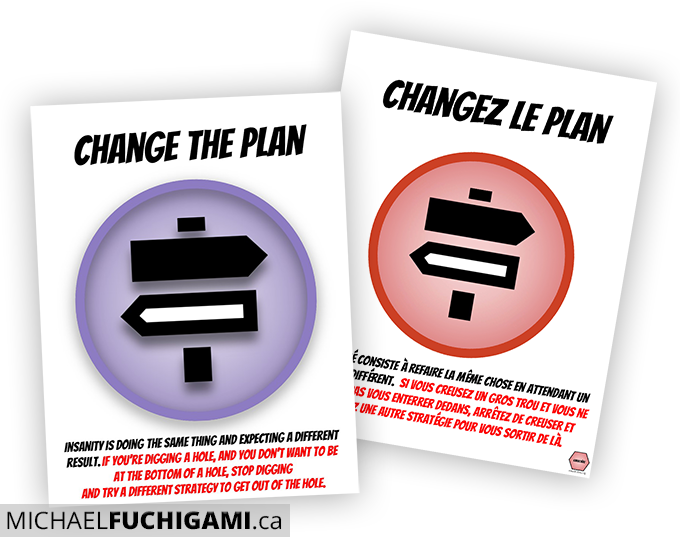
How to keep going when we’re not successful, yet: Part 3
It’s tough when we’re not successful, yet. But, if you’re able to enjoy the pain and the process, sometimes it gets easier. (Apparently, the secret sauce of happiness is in the solving of problems.)
So, if I want to get my metaphorical lawn nice and greeny, and things aren’t working, yet, maybe it’s time to try to fail.
No, seriously.
Try to fail. And fail, lots!
I don’t mean fail by trying to sabotage yourself. I mean sometimes, if we’re not successful yet, try to tinker around with little experiments that probably won’t work…
But, we can still learn from those little experiments that will probably fail anyway.
It’s hard to fail. We feel like, well, a failure. But try this:
Set a goal of failing 3 times.
It’s easy to try once and then give up. Try 3 different ways and once you give it your all for three tries, then you can give up. (No cheating – make sure they’re honest tries.)
Set a goal of failing 5 times.
Congratulations, you’ve failed 3 times!
- I bet it was hard to really try three times, and still fail.
- It’s hard to pick yourself up once you fall, but the more you learn to keep going, the easier it gets.
- Success is around the corner!
Set a goal of failing 10 times.
If you’ve made it this far, you’re doing some serious learning.
- Keep track of what’s not working.
- Write down why you think the first plans failed and then change the plan.
- What tweaks could you make?
- Don’t give up!
Set a goal of failing 26 times.
Failing 26 times seems like an odd choice, but it’s because there are 26 letters in the alphabet.
Start with “plan A” and then try “plan B” and then keep going until “plan Z”… I bet you succeed before you fail 26 times. At least, that was my experience when I spearheaded the Better World Project where Grade 7 / 8 students and teachers ran large-scale events to fundraise over $30K for charity.
Set a goal of failing 1000 times.
Yup, a thousand times. Thomas Edison invented a new battery after several thousand ways that didn’t work.
- Each time you fail, you learn another way that won’t work.
- Each step brings you closer to victory!
- This strategy is for epic, world-changing dreams.
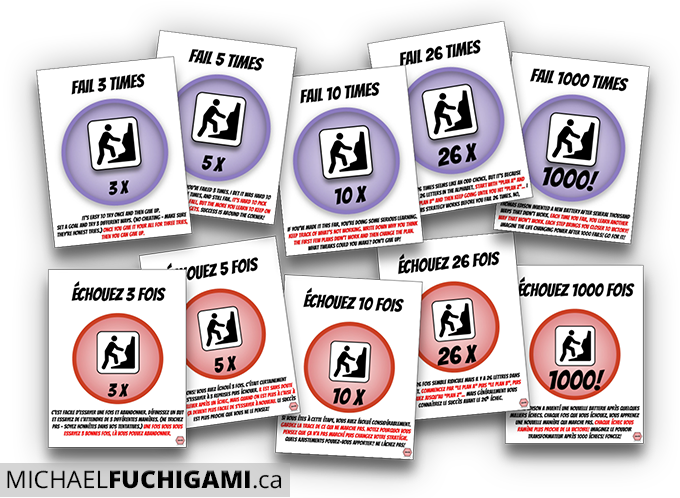
TOO LONG; DIDN’T READ Summary: How to keep going when life sucks…
Short on time? Here are the talking points for those water cooler conversations…
1. WHEN LIFE REALLY SUCKS, GET HELP. I did.
- If you’re a youth in Canada (20 years old or younger), reach out to a trusted adult. Kids Help Phone also offers 24/7/365 support.
- If you’re an adult in Ottawa (16 or older), you can contact the Crisis Line.
- The Canadian Mental Health Association has information about preventing suicide.
- You can also Google search crisis line.
2. Decide to do something about your crappy lawn / life
- You can complain, feel guilty, blame others, accept crappiness that the universe has unfairly thrown your way.
- You can also try to own it, make it part of your story, rewrite your narrative, and do something.
- But, don’t forget the serenity prayer – you might have to make peace with your situation: Accept the things you cannot change, have courage to change the things you can, and find wisdom to know the difference.
3. #GetLoud about Mental Health
- It’s okay to struggle with mental illness or mental health obstacles
- Your pain is real. Your experience is valid.
- You can’t compare your pain to other people’s pain. The obstacles that other people face does not diminish or invalidate your experience.
- If it’s a crisis to you, then it’s a crisis.
- Pop culture and media normalizes an exaggerated, sensational, skewed view of mental health, mental illness, and teen suicide.
- We need a balance of stories:
- Despite what popular culture tells us, extreme bullying does not have to lead to extreme violence.
- Create your own stories about resilience.
- Give our students and children tools to pick themselves off the ground.
- Share your story – Don’t be ashamed of your story. It will inspire others.
- #GetLoud about mental health, understanding suicide and finding help for our loved ones.
4. Ontario teachers / school boards need consistent, accurate health messages on mental health, mental illness and student suicide
- Principals, superintendents, and school boards should be given policies on when to inform the public that their children have been exposed to ideas of suicidal ideation.
- Teachers should receive sensitivity training on mental health issues and appropriate messaging around bullying, suicide, school shootings, and mental health supports.
- Policies and training should be developed from multiple voices and stakeholders.
- Teachers don’t diagnose mental illness… But they can support students at risk by knowing what to look for, who to report to and where to find resources.
- Teachers need to be aware that intent doesn’t matter as much as impact. They have the power to choose which stories get told in their classrooms and assemblies. This is an opportunity to challenge mental health misconceptions and stereotypes in popular culture and media.
5. Resilience strategies to try when your lawn / life is crappy
How to get started when life feels overwhelming:
- Set a timer and just start – do anything
- Measure progress and try to keep the momentum going
How to keep going when we’re not successful, yet:
- Don’t give up. Try to develop new habits.
- Work smarter, not just harder: Use strategies, put in the effort, pay attention to results to optimize what you’re doing, and tinker with little experiments.
- It’s okay to change the plan and try something new.
- Intentionally try to fail. (Tinkering means trying things that probably won’t work, but we can learn from the process.)
Do you agree or disagree with this article? Continue the conversation:
We need to #GetLoud about our children’s mental health. What’s your story?
If you know a parent, teacher, or someone who works with children, please take a moment to share this article about mental health, resilience, and teen suicide.
It’s a long read, but an important conversation.
#GetLoud
Cheers, Mike
This post was written 146 days after Jan 1, 2019 – the first day of the rest of my life.
